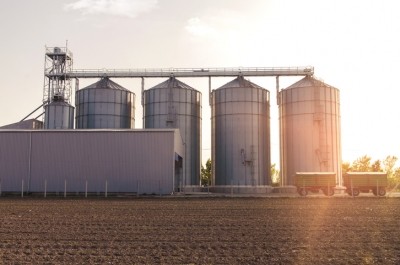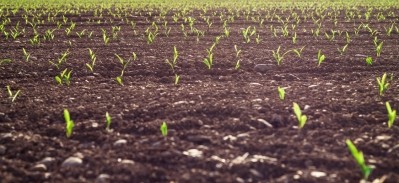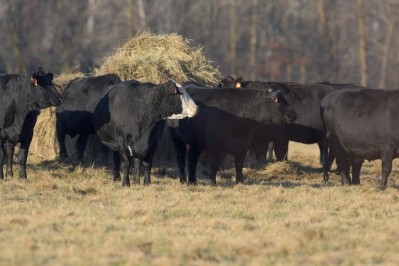USDA: Argentinian corn crop production looks to rebound post drought

The US Department of Agriculture’s (USDA) Foreign Agricultural Service (FAS) released details of expectations for feed crop production for the 2017/18 marketing year and predictions for the 2018/19 marketing year in Argentina last week through a new global agricultural information network report.
Overall, exports of wheat and barley are anticipated to drop in the coming 2018/19 marketing year, said the report author. However, corn production and use are expected to increase.
“In MY2017/18, due to the severe drought during summer, there were 150-200,000 hectares of corn which were not harvested for commercial corn because of potential low yields (these fields were turned into silage, grazed or abandoned),” he said. “Weather during 2018/19 is expected to be normal (although some forecasts are nowadays mentioning the possibility of having an El Nino, which in this part of the world it typically means more rain than normal).”
Corn exports for 2017/18 dropped to about 22m tons, based on domestic consumption, slow farmer selling and international price competition from the US, he said.
Feed crop market details
Corn production in the coming marketing year is expected to grow in harvested area and production, said the report author. Harvested area is predicted to be 5.3m hectares and production expectations have been increased to 41.5m tons.
“Although MY2017/18 was affected by a severe drought, the weather in the previous two corn crop seasons received significantly more rainfall than normal, resulting in high yields,” he said. “Farmers are expected to continue to use high technology, especially good levels of fertilization.”
Production in 2017/18 is expected to drop to 32m tons with average yields being lowered by summer drought, he said.
However, consumption for the coming marketing year is forecast to increase to 13m tons, he said. There also is predicted to be higher corn use in 2017/18 as the livestock sector and dairy production continues to expand.
“For several years now, the local cattle sector continues to experience an expansion cycle, with a recovery of the herd which results in a larger slaughter and beef production,” he said. “The poultry and pork sectors seem to have reached a production and demand ceiling for the time being.”
In marketing year 2017/18 the barley harvest was smaller than anticipated and production dropped by about 240,000 tons, the report author said. About 60-80,000 hectares of the crop were lost to “excessive rain.”
“Lower production is expected to result in smaller exports, which post estimates at 2.45m tons, 150,000 tons lower than USDA,” he said. “Exports from December 2017 through June 2018 totaled 2.14m tons. By mid-July, exporters had declared purchases of 2.25m tons of barley MY 2017/18.”
Production and area planted in barley are anticipated to drop from earlier expectations in 2018/19, the report author said. The forecast is for about 1m hectares to be planted with about 960,000 hectares harvested.
Total production is forecast to be about 3.85m tons, again lower than initially expected, he said. “This lower output is expected to result in exports of 2.7m tons, 100,000 tons smaller than USDA,” he added.
A slight majority of the barley exports, about 1.5m tons are anticipated to be in feed barley, he said.
“Local brokers indicate that due to the world’s tight barley supply and demand, with lower production in key exporting countries, Argentina will be in a strong position to ship its barley,” he said. “Argentine feed barley will primarily enter the market in December-February with Saudi Arabia expected to be the main destination by far, followed by UAE, Kuwait and Oman.”
Forward selling has been higher than previous years, he said. “By mid-July, local exporters have purchased 520,000 tons of feed barley and 170,000 tons of malting barley of the 2018/19 crop,” he added.
Harvested area for sorghum is predicted to increase for 2018/19 with production rising to 3.3m tons, he said. However, dry weather has reduced overall yield for the current crop.
“Sorghum exports in MY2018/19 and MY2017/18 are expected to remain low. The major historic importers of Argentine sorghum, like Japan, Chile and Colombia, have all diminished sorghum imports over the last few years,” he said. “Brokers indicate that the current trade dispute between the US and China could eventually open some opportunities.”
Wheat production in marketing year 2018/19 is expected to be about 19.5m tons – a record, said the USDA. Current forecasts predict a production of 19-20m tons and more than 6m hectares have been planted.
“After the severe drought that affected most of Argentina during December 2017-March 2018, it rained abundantly in April and early May,” the report author said. “The weather then began to normalize as winter approached, with drier and colder days. This allowed planting to progress in a fast manner.”
Most wheat fields are reported to be in good production, he said.
The estimation for wheat production in 217/18 is about 18.2m tons, slightly higher than earlier expectations, he said. Yield is anticipated to have increased based on good weather for the winter crop and use of technology.
However, exports for 2018/19 have been dropped to 13.6m tons, based on ending stocks, he said. “We do not foresee the market allowing stocks to get too low as it would create significant market tensions, with possible price spikes that could have a direct impact on local food prices and inflation,” he added.
Export markets are anticipated to include Brazil, Bolivia, Chile, Uruguay and locations in Africa, he said.
“Exports in 2017/18 are expected at 12.4m tons, 400,000 tons higher than USDA,” he said. “Through mid-July, local traders have exported approximately 9.5m tons, and have purchased 11.4m tons of the 2017/18 wheat crop.”












